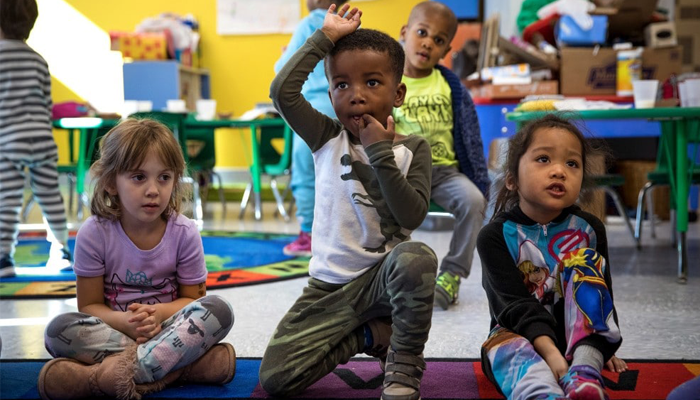 The system that matches students with schools in Washington, D.C. based on a combination of choice and luck is the subject of a feature story in the Washington Post magazine by Tom Toch, who praises the centralized assignment system for simplifying the application process and leveling the playing field.
The system that matches students with schools in Washington, D.C. based on a combination of choice and luck is the subject of a feature story in the Washington Post magazine by Tom Toch, who praises the centralized assignment system for simplifying the application process and leveling the playing field.
As Toch writes:
Public school choice has expanded steadily in the nation’s cities since the first magnet schools emerged nearly five decades ago as a way to desegregate public school systems voluntarily, and especially since the start of charter schooling in the early 1990s. But in Washington and the rest of the country, taking advantage of expanding school options traditionally meant navigating myriad application timelines and deadlines without information to make clear comparisons. It meant oversubscribed schools pulling names out of paper bags, families pitching tents on sidewalks — or paying others to camp out for them — to get to the front of wait-list lines, and schools cherry-picking applicants to get the most attractive students: a system favoring the well-educated, the wealthy and the well-connected.
He continues, describing the computer program that assigns D.C. public school students to schools today:
Because My School DC’s software places students, the system levels the playing field for families who lack political connections or the time and resources to stand in lines, lobby school principals and complete scores of applications. The algorithm rewards the ranking of schools in students’ true preference orders, removing any advantage of attempts to game the system. And a common online application process eliminates multiple deadlines, lost paperwork and the cost to schools of hiring people to input thousands of paper applications.
In the article, Toch considers how much the system is able to accomplish in terms of addressing segregation and inequality.
At NPR, Anya Kamenetz takes a long look at how lotteries work in a variety of educational settings.
She gives some background on the systems of ranked-choice matching (like MySchool DC) used in different cities that allow families to choose schools and considers the idea, floated recently, of a lottery for admissions to elite colleges.
Kamenetz describes OneApp, used in New Orleans to match students with schools and talks with Doug Harris, who has studied the assignment system extensively, about how it is working, Harris says that OneApp has made the process of choosing schools easier and the transparency of the process has made the system seem fair, since it is not possible to game the system. However, Harris says that OneApp has not made the schools in New Orleans any less segregated by race, income, or test scores.
The development and performance of the OneApp system in New Orleans is the subject of an Education Next article by Douglas N. Harris, Jon Valant and Betheny Gross in the Fall 2015 issue of Education Next.
They write:
Experience with the OneApp in New Orleans reveals both the significant promise of centralized enrollment and the complications in designing a system that is technically sound but clear to the public, and fair to families but acceptable to schools. The OneApp continues to evolve as its administrators learn more about school-choosing families and school-choosing families learn more about the OneApp. The approach remains novel, and some New Orleanians have misunderstood or distrusted the choice process. The system’s long-term success will require both continued learning and growth in the number of schools families perceive to be high-quality options.
— Education Next


